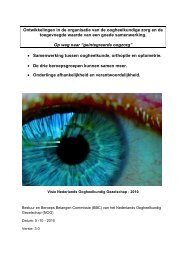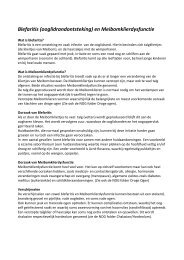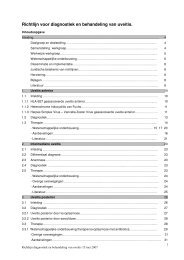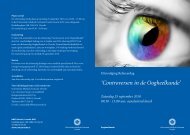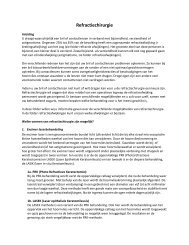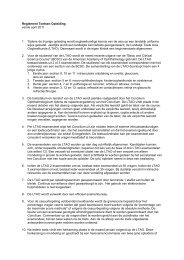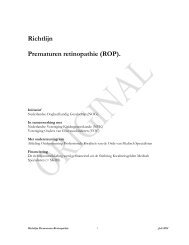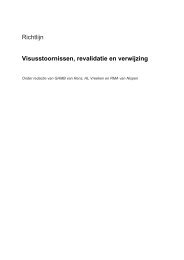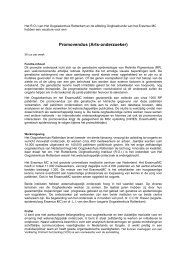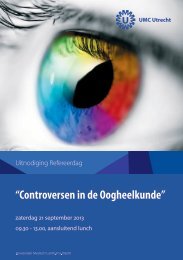terminology and guidelines for glaucoma ii - Kwaliteitskoepel
terminology and guidelines for glaucoma ii - Kwaliteitskoepel
terminology and guidelines for glaucoma ii - Kwaliteitskoepel
You also want an ePaper? Increase the reach of your titles
YUMPU automatically turns print PDFs into web optimized ePapers that Google loves.
- Weaknesses<br />
Limited IOP range<br />
Patients with advanced disease (≥16 Db) were excluded<br />
Limited treatment options<br />
High sensitivity of method <strong>for</strong> assessing progression may have reduced specificity<br />
II. 6 - CLINICALLY USEFUL POINTS FROM THESE STUDIES<br />
II. 6. 1 - from OHTS<br />
1. 90% of OHT did not convert in 5 years, raising the ‘need to treat’ question.<br />
2. Treatment is effective: of the approximately 10% that converted half could be prevented by the OHTS treatment.<br />
We do not know how much longer this treatment prevents further conversion.<br />
3. It did not tell us what treatment would reduce the number of converters to close to zero.<br />
4. The majority of conversion was based on ONH change: monitoring of the optic disc is essential <strong>for</strong> follow-up of<br />
OHT next to visual field. Will all disc changes eventually lead to significant visual field defects<br />
5. Conversion based on optic disc / RNFL changes (OHTS) may come be<strong>for</strong>e white/white VF changes.<br />
6. Results on alternative methods <strong>for</strong> discovery of earlier visual function disturbances have not - yet - been published<br />
by OHTS. Preliminary SWAP analysis suggested that a proporton had VF defects at entry; this plus the suggestion<br />
of pre-existing disc change says that many already could have had POAG.<br />
7. At a mean treated IOP level of 19.3 mmHg, 4.4% reached the endpoint. Delta IOP was 4.6 mmHg (



